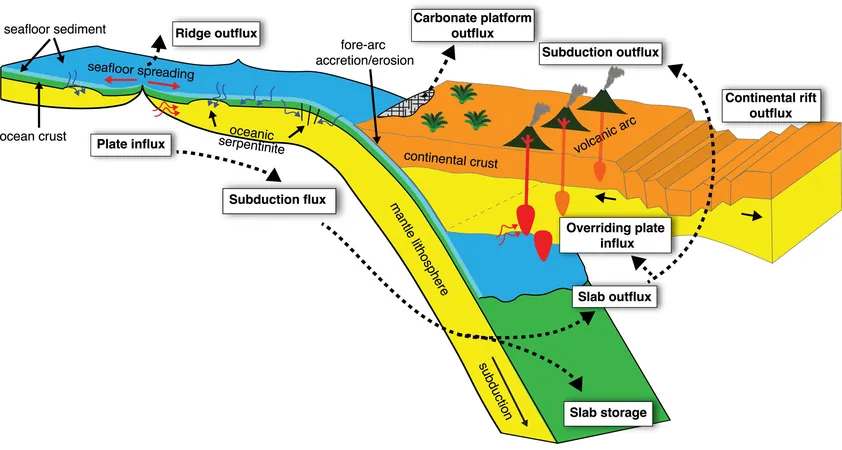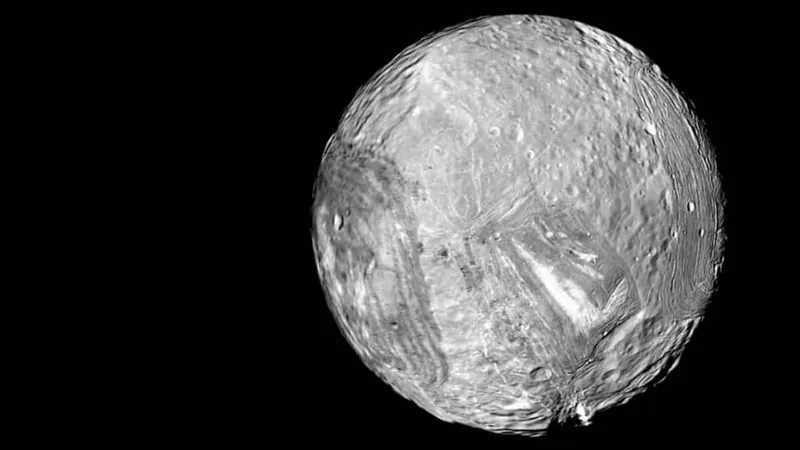
Groundbreaking Research Unveils Deep Earth’s Role in Carbon Emissions and Climate Change!
2024-11-07
Author: Li
Groundbreaking Research Unveils Deep Earth’s Role in Carbon Emissions and Climate Change!
In a remarkable new study, scientists have shed light on how the shifting of Earth’s tectonic plates may have significantly contributed to our planet's carbon emissions. Published in the prestigious journal Geochemistry, Geophysics, Geosystems, researchers led by R. Dietmar Müller reveal that these natural processes could have shaped climate conditions over the past billion years.
As the Earth's tectonic plates collide, separate, and move, they create various formations such as volcanoes, undersea vents, and mid-ocean ridges. These geological features serve as outlets for carbon dioxide trapped deep within the Earth, allowing it to escape into the atmosphere. While the contributions from these natural sources are dwarfed by human-induced carbon emissions, their effects on Earth's atmosphere are crucial over geologic timeframes.
Historically, scientists have underestimated the volume of carbon released by plate movements, focusing mainly on the gases released during tectonic activity. However, Müller and his team have taken a groundbreaking approach by incorporating two recent studies on plate movements to develop a more refined model detailing the carbon output linked to geological processes.
The research findings indicate a striking correlation between periods of heightened carbon emissions and warm phases in Earth's climate history. Notably, the model suggests that increased carbon release aligns with the onset of the Ediacaran period approximately 653 million years ago, a time characterized by significant climate warming.
Conversely, the model predicts lower carbon emissions during periods of colder climate, such as the "snowball Earth" phase that occurred between 700 and 600 million years ago. This revolutionary insight provides a clearer understanding of how deep Earth processes influence long-term climate trends.
Furthermore, the breakup of the supercontinent Pangea appears to have been a significant event, facilitating vast amounts of carbon dioxide release as tectonic plates diverged. This aligns with the warming trends believed to have occurred during that dramatic geological shift.
The researchers conclude that tectonic activity is a vital player in determining Earth’s atmospheric composition over extensive geological timescales. However, despite these promising advances, much remains to be explored regarding the intricate relationship between plate movements and the planet's carbon cycle.
As we confront the challenges of climate change today, unlocking the mysteries of Earth's geological past may offer crucial insights into our future. Stay tuned for more captivating discoveries that might forever change our understanding of climate dynamics!

 Brasil (PT)
Brasil (PT)
 Canada (EN)
Canada (EN)
 Chile (ES)
Chile (ES)
 España (ES)
España (ES)
 France (FR)
France (FR)
 Hong Kong (EN)
Hong Kong (EN)
 Italia (IT)
Italia (IT)
 日本 (JA)
日本 (JA)
 Magyarország (HU)
Magyarország (HU)
 Norge (NO)
Norge (NO)
 Polska (PL)
Polska (PL)
 Schweiz (DE)
Schweiz (DE)
 Singapore (EN)
Singapore (EN)
 Sverige (SV)
Sverige (SV)
 Suomi (FI)
Suomi (FI)
 Türkiye (TR)
Türkiye (TR)